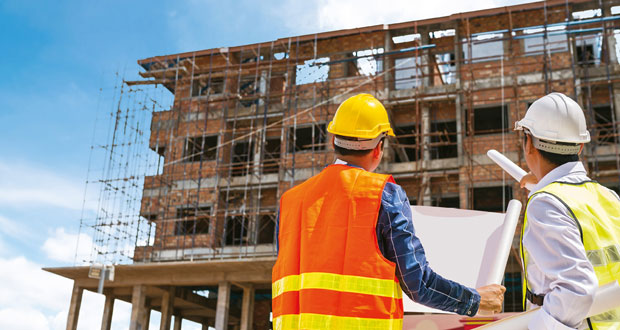 Marc Bradfield, Director at Bureau Veritas, outlines some of his key observations from understanding and observing the Golden Thread
Marc Bradfield, Director at Bureau Veritas, outlines some of his key observations from understanding and observing the Golden Thread
The concept of the ‘golden thread’ under the Building Safety Act 2022 is often perceived as complex and daunting, but it essentially revolves around ensuring that the right information is available to the right people at the right time.
This principle is vital across all design stages, from the initial concept through to the delivery and construction process, to ensure that duty holders identify, understand, manage, and mitigate building safety risks throughout a building’s life-cycle – in essence it’s a digital record that has been designed to help not hinder the entire process from the outset of design, through construction and during occupation.
While the legal concept of the golden thread is specific to Higher-Risk Buildings, it can be seen to be an important concept to enable the management of any building in a safe manner.
It is relevant to design work, building work and maintenance to ensure compliance with legal duties and ensure building safety is at the forefront at all times. Once established, during occupation, for example, modifications or enhancements to a building are accurately documented and enable building owners to proactively identify potential risks or hazards and take corrective action throughout a building’s lifecycle.
Some of the most critical principles are:
- Right information at the right time: Ensuring that all stakeholders, from architects to contractors, to facilities managers, have access to accurate and up-to-date information.
- Proportionate to the scheme: The level of detail in the golden thread should be appropriate to the size and complexity of the building.
- Electronic format: All information must be stored electronically to ensure consistency and accessibility.
- Accountability and security: Information must be secure, accountable, understandable, consistent, simple to access, and durable.
- Principal accountable person: In the case of a high-rise residential building, there must be a designated individual, often the facilities manager, who knows the building inside out and is responsible for managing its safety.
These principles ensure that safety information is not only available but also actionable, allowing for effective management of a building throughout its life.
HIGHER-RISK BUILDING (HRB)
We are now moving beyond a time of what, for many, often seemed like endless debates and webinars providing updates and opinions of what the new regime under the Building Safety Act 2022 may look like.
Many are now taking their first steps into projects that necessitate them to think differently about how they as individuals and their organisations approach delivery of design and building work. This is regardless of whether they are dealing with what may be classified as a Higher-Risk Building (HRB) or indeed a non-HRB. This extends from new duties for individuals with a focus on competence on all schemes controlled under building regulations through to the new procedural requirements for a HRB.
For the HRB, The Building (Higher-Risk Buildings Procedures) (England) Regulations 2023, which is one of the many pieces of legislation that has been created or modified under the Building Safety Act 2022, this brings a number of submission documents that must be approved before commencement on site.
This includes; competence declarations, a change control plan, a building regulations compliance statement, a mandatory recurrence reporting plan and a level of design that demonstrates how the work will comply with building regulations.
 While these requirements are specific to a HRB submission, it is perhaps difficult to argue that the philosophy behind these is not essential to ensuring a safe building whatever its classification.
While these requirements are specific to a HRB submission, it is perhaps difficult to argue that the philosophy behind these is not essential to ensuring a safe building whatever its classification.
Take a Change Control Plan, which perhaps has often centred on a commercial basis, should we not be able to demonstrate the consideration given to potential compliance issues with building regulations long before building?
Or in the case of the Construction Control Plan, should we not be able to describe the strategies for how the building work will be managed in order to maintain compliance with building regulations? Central to all of this is a consideration of how information on the design and construction will be managed and stored and ultimately ensure that this information is available to ensure ongoing building safety once occupied.





